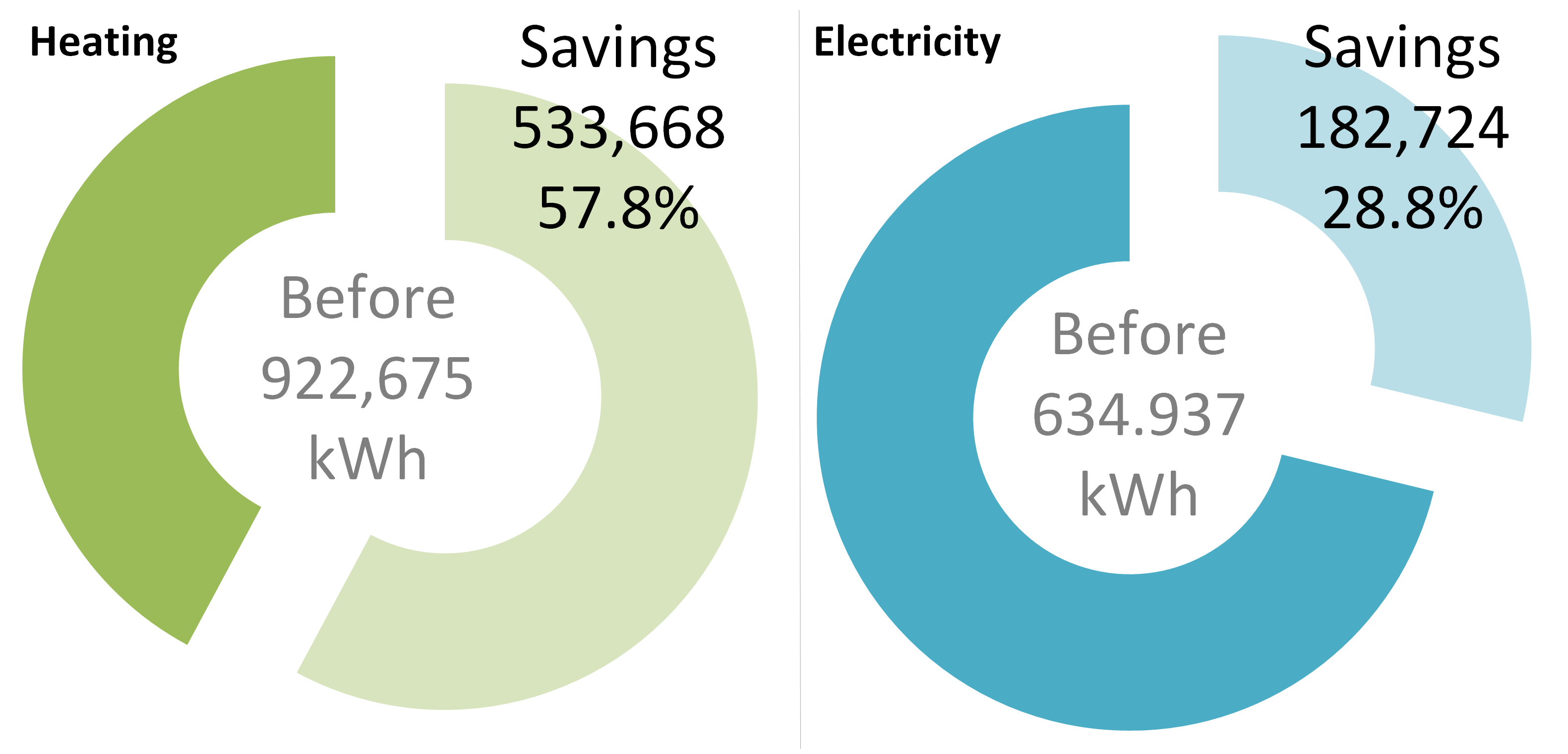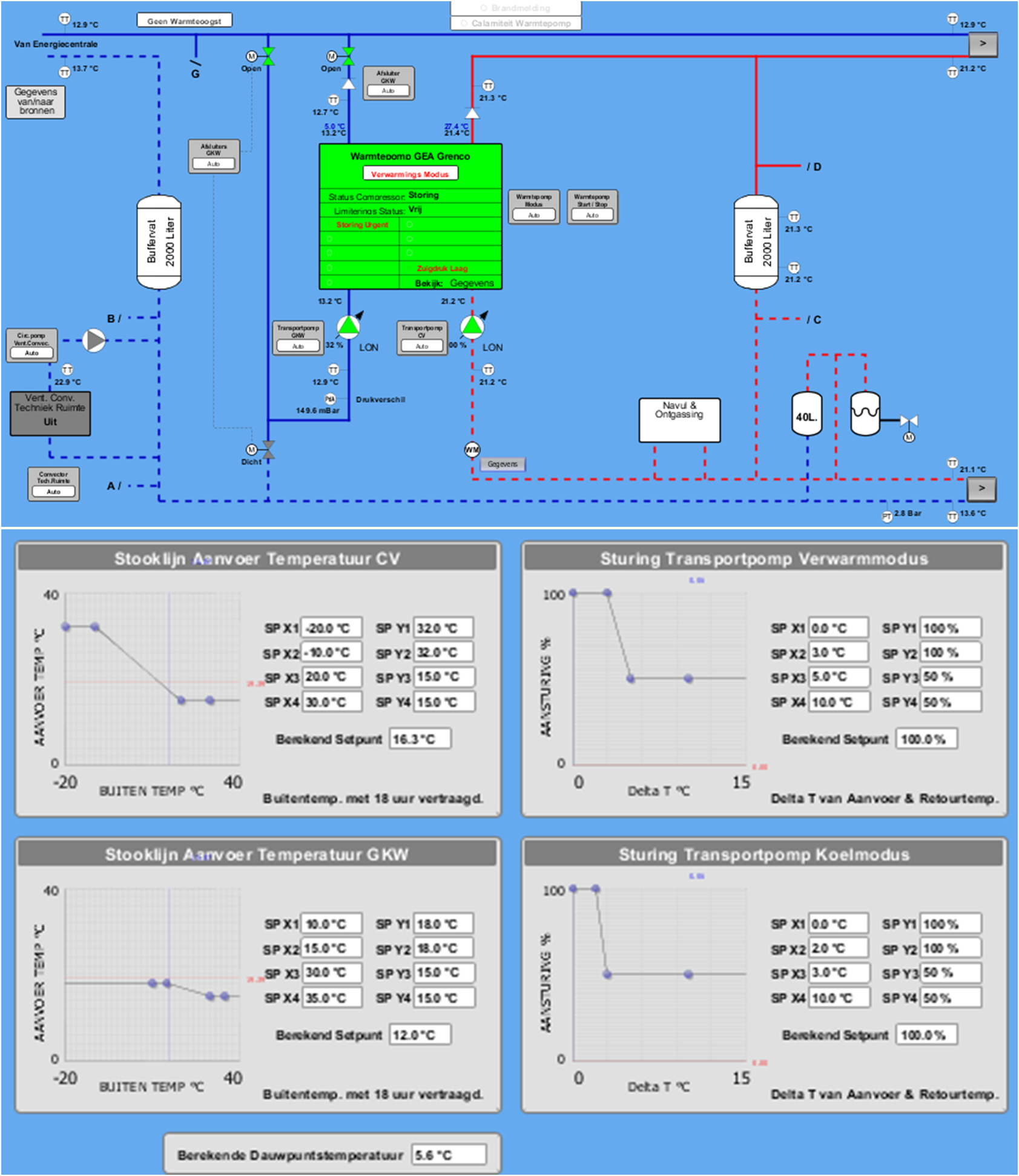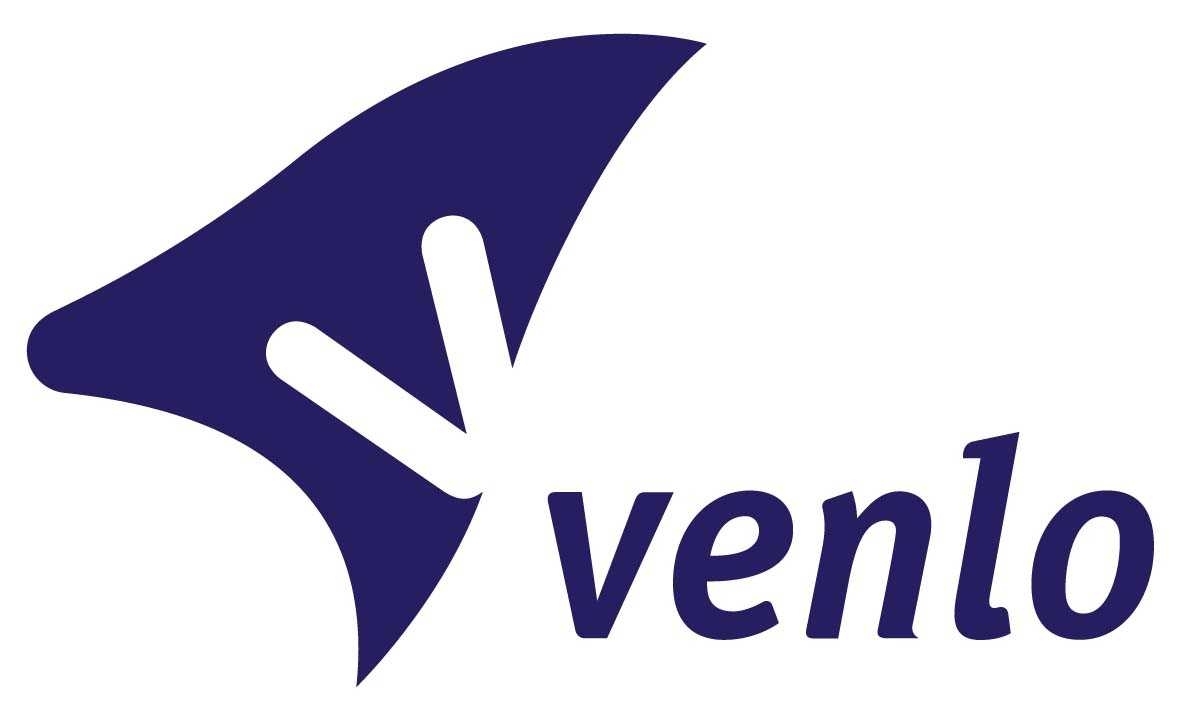Venlo¶
Video – Savings – Service – Cost-Benefit – Exploitation – Partners
Villa Flora is also known as ‘the greenest office in the Netherlands’. With its combination of state-of-the-art environmental technologies it is also a landmark of sustainability. It hosts offices and public meeting rooms as well as a greenhouse. The Venlo region has been designated one of the Netherlands’ Greenports. Venlo was the first region worldwide to embrace the cradle-to-cradle (C2C) philosophy, a concept for sustainability based on the reuse of raw materials, which renders products completely recyclable and turns waste into raw materials.
The building is heated and cooled using heat pumps. Even though it is theoretically green, the volume of water being pumped has to be controlled and the project showed that ICT-solutions involving the staff on sight are needed to ensure maximum efficiency is kept. The objective of the ems solution is to gather rough data and to transfer it into intelligent data. The objective of the edss system is to analyse data and create intelligent dashboards, reports and steering information for the building systems.
Video¶
Savings¶
For more details visit the eeMeasure tool and the SMARTSPACES deliverable D7.2 also covering qualitative surveys.
Service¶
To login please use the following informtion: username:KantoorTotaal, Password:Kantoren1234, Domain:VillaFlora, Please make sure you have added the website as trusted website before you login.
edss¶
The edss is accessible by building users by web browser. The building user can log in to their own account which gives information about the energy use of their own zone. Also information is provided about the comfort.
The green box is the savings counter. It will be coloured red if there is no savings. At the bottom the comparison of the energy use of the last month and the same month in the last year. Reports are generated to give a weekly overview. These reports are shown at the information screen in the office space about energy usage of the whole office.
Visitors are made aware of the green image of Villa Flora through different methods. Throughout Villa Flora the QR-codes can be scanned. This links the user of the scanning device (cell phone, tablet) directly to the website of the portal (http://smartspaces.volantis.nl:4900/). On this website users can view up-to-date information about energy consumption and get information about saving energy. They are also made aware of the SMARTSPACES project and can obtain a link to the project on the intranet. An example of a visitors screen is displayed in the next figure. This screen is exposed at the entry of the office of Volantis.
ems¶
The ems allows building users (in this case workers and staff members) to set and modify controls for energy use for the parts of the building they are occupying. While building managers have full access, normal staff members are able to manipulate local systems such as lighting, heating, ventilation and cooling per room. The energy service ICT application (ems but also edss) run from a web application providing insight into the actual energy use and other parameters of the space in which the users are located. It also offers the possibility to adjust these parameters. The application provides feedback on the user’s energy consumption and for which purpose this energy is consumed. The system offers functions for viewing and / or controlling:
- Heating, Ventilation and Air-conditioning (HVAC)
- Room climate
- Central generation of heat and cold through Fiwihex solution
- Biomass energy generation
- Re-use of water
The performance is monitored by approximately 300 data points. These 300 data points will generate data sets relating to heating, cooling and ventilation (HVAC) that will be stored and used for in-depth analysis. This is illustrated in the following schema describing the installations for heating with various data points and controls.
Another important aspect of the ems development is the monitoring features of the innovative control strategy. This strategy is innovative because uses forecasting methods for the determination of the heating and cooling load and offers options for reducing peak loads by activating the mass of the building during the night. The overall goal is to achieve an optimal balance between comfort, energy use and peak loads.
Value propositions¶
The Villa Flora, by design, is a very energy efficient building utilising various non-IT high-tech solutions. Still, SMARTSPACES could show that such buildings have energy savings potential by optimising settings with a flexible ems and avoiding wastage due to behaviour with edss. Every building is unique with its own parameters and quality of build, piping connections etc. is not identical throughout. The analysis engine in SMARTSPACES provides makes sure that the parameters are working for this building and not only the default average value which is set by the provider of hardware. Moreover, the service does not only detect larger mechanical or hydraulic faults early but is smart enough to point at smaller leakages. “Dumb” ems would only tune certain variables to reach the target parameter without narrowing down the area in which the anomalies occur.
Cost-Benefit¶
The SMARTSPACES achieves cost-neutral socio-economic return. As the building is new, the baseline scenario of consumption resembles an ideal case but more wastage becomes more likely with time. Hence, the absolute saving might be higher in the future. Most of all, primary energy consumption is being avoided as other building operated (by the service provider) without SMARTSPACES consume more gas to compensate for incorrect settings of (green) heat pumps.
Exploitation¶
The SMARTSPACES concept has a great potential, the concept of monitoring by professionals on the energy use and performance of the HVAC systems will reduce the energy use of an average building drastically. With the project we learned that building users have more influence on the total consumption than originally anticipated and the service cannot stop with automatisation. Therefore the concept will be disseminated and further developed. The expectation is to implement the service in 25 building in the next 3 years.
As the supplier of the software is just entering the market and not partner in the consortium, the majority of the marketing and exploitation efforts is not yet public.
Partners¶
The City of Venlo has a population of close to 100,000 inhabitants. In 2001, the municipalities of Belfeld and Tegelen and in 2010, the municipality of Arcen en Velden were merged into the municipality of Venlo. The region accommodates one of the country’s largest agribusiness parks, as well as various major educational and research institutes in the field of agriculture and horticulture. Having already adopted the principles of the Green City, Venlo has added a new dimension being the first region worldwide to embrace the cradle-to-cradle (C2C) philosophy, a concept for sustainability based on the reuse of raw materials, which renders products completely recyclable and turns waste into raw materials. The Municipality of Venlo/Villa Flora will develop the pilot site activities in close cooperation with other organisations and is the pilot site manager in Venlo.





